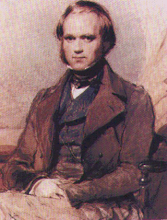
34 million years ago, in central Colorado, volcanic eruptions sent mudflows downslope, burying a forest of giant redwoods, damming a nearby river, and forming a large lake.
Subsequent eruptions deposited volcanic ash that buried insects and plants washed into the lake. The fine-grained ash preserved the smallest detail, including the antennae, legs, and sensory hairs of insects and the petals of flowers. This story is preserved in the rocks of Florissant Fossil Beds National Monument.
Florissant is famous for its abundance of fossil leaves, large tree stumps, and insects. More than 1,500 different kinds of fossil insects are found here, including dragonflies, cockroaches, grasshoppers, flies, beetles, wasps, ants and butterflies. The largest fossil tree preserved at Florissant is 13 feet in diameter and estimated to have been 300 feet tall and 1,000 years old.
A fossil photo gallery can be found here.
The image, above is from here.


No comments:
Post a Comment